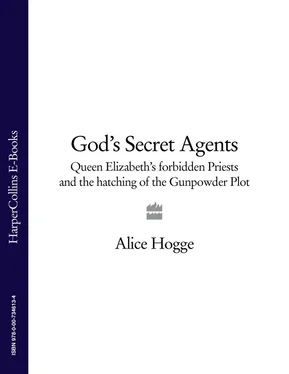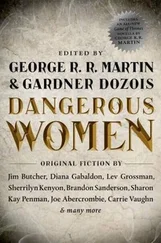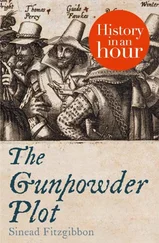And if the new Anglican Church was built upon the bedrock of compromise, then many who attended it did so in the same spirit. When, in the summer of 1562, a number of prominent Catholics approached the Spanish ambassador, and through him Rome, to ask if they might worship in the Queen’s new Church, the answer they received (in the negative) was not considered absolute enough to act upon, so worship there they did. When many local priests became aware of the level of Catholic feeling in their parishes they made adjustments accordingly; so Catholics might have ‘Mass said secretly in their own houses by those very priests who in church publicly celebrated the [Protestant] liturgy’. To compromise made sound political sense. 23
But could it ever make spiritual sense? The notorious sixteenth century Cambridge academic, Dr Andrew Perne of Peterhouse, ‘was known to have changed his religion three or four times to suit the change of ruler’, but when Perne was asked by a close friend ‘to tell her honestly and simply which was the holy religion that would see her safe to heaven’, he replied, ‘I beg you never to tell anyone what I am going to say…If you wish, you can live in the religion which the Queen and the whole kingdom profess—you will have a good life, you will have none of the vexations which Catholics have to suffer. But don’t die in it. Die in faith and communion with the Catholic Church, that is, if you want to save your soul.’ Perne never had the chance to heed his own advice: he died suddenly, on the way back to his room after dining with the Archbishop of Canterbury, caught out not only in the wrong faith, but also in the headquarters of that faith, Lambeth Palace itself. But this was the dilemma facing all Englishmen now: how did you square your political survival with your spiritual salvation, if, like vast numbers of your fellow countrymen, you still regarded yourself as Catholic? Happy were those whose conscience and the law agreed. For those others, the future, both in this world and the next, looked much more uncertain. 24
In November 1561, three years into Elizabeth’s reign, the mayor of Oxford had the unpleasant task of informing the Privy Council that ‘there were not three houses in [Oxford] that were not filled with papists’. And, added the new Spanish ambassador, Bishop Alvaro de la Quadra, in his regular gossip-filled letter to the Duchess of Parma, ‘the Council were far from pleased, and told the Mayor to take care not to say such a thing elsewhere’. But to those with any knowledge of the city’s past, this level of defiance will have come as no surprise: Oxford was running true to form. Deep in the cellars below the Mitre Inn on the High Street, at the Swan Inn, the Star Inn and the Catherine Wheel, Oxford’s Catholics were meeting in secret and in droves to celebrate their forbidden mass. * 25
If the city of Oxford was reluctant to embrace the new Church, then its university was proving even more mutinous. In May 1559 the Swiss Protestant Heinrich Bullinger was confidentially advised against sending his son to college at Oxford, for ‘it is as yet a den of thieves, and of those who hate the light’. That same month John Jewel, now Bishop of Salisbury, was noting with some frustration that ‘our universities are in a most lamentable condition: there are not above two in Oxford of our sentiments’. And when Elizabeth’s visitors arrived at the university that year to enforce the new religious settlement, they were daunted by the strength of Catholic opposition they encountered. 26
At New College they avoided asking everyone to subscribe to the Oaths of Supremacy and Uniformity for fear of the number of refusals, reported Nicholas Sanders, a fellow of that college. The Bishop of Winchester, the visitor responsible for New College, found similar hostility at his other wards, Trinity, Corpus Christi and Magdalen. Here, too, he declined to look closely. Instead, he and his fellow visitors concentrated their attention on what they saw as the root of the problem: the men in charge. Within two years only one of Oxford’s college heads appointed during the previous reign remained in office and with that the Council seemed to be content. Let these new replacements keep their house in order and play the heavy hand. That the sole surviving college to retain its Marian head, New College, was the scene of widespread, Council-led purges throughout the first decade of the reign merely seemed to support the wisdom of the Government’s policy. 27
Then fate stepped in to send the precarious balance of European power reeling. In July 1559 an unlucky tilt at a French court tournament left King Henri II dead, his fifteen-year-old heir, François, in the sway of his zealous cousins the Guises, and his teenage daughter-in-law, Mary Stuart, sufficiently emboldened to have herself heralded with cries of ‘Make way for the Queen of England!’ A nettled Elizabeth was soon persuaded by her Council to send money to help the Protestant, anti-French rebellion in Scotland and quickly the situation spiralled into open confrontation. 28
In early 1560, mindful of the need to present a strong show of national unity in times of danger and fearful that the conflict had fallen far too neatly into battle lines of an awkwardly religious nature, Elizabeth sent her visitors back to Oxford. Soon Bishop de la Quadra was reporting home that ‘Oxford students…[known to be Catholic]…have been taken…[and imprisoned]…in great numbers’. Was this how it was going to be from now on? Each time an enemy threatened was any Englishman not seen to be standing foursquare behind the Queen’s new church and openly obeying her laws liable to arrest and imprisonment? The detention of six Oxford students the following year, for resisting the mayor’s attempts to remove their college crucifix, seemed to confirm this. As Elizabeth braced herself for the return home to Scotland of the newly widowed Mary, it was more the openness of the students’ defiance that earned them their prison sentence: after all, the ultra-conservative Elizabeth still kept a crucifix in her own royal chapel. 29
A pattern was being established, a pattern that those English Catholics arrested for attending mass at the French embassy in February 1560, even as the situation in Scotland worsened, might have been able to spot for themselves. The rationale behind it was simple. Had England’s fortunes been entirely separate from those of Europe then Elizabeth and her government could have been content to settle back and let the dismantling of the English Catholic Church be a gradual one, sure in the knowledge that in time the majority of their countrymen would come round to their way of thinking. But England was as entangled with the rest of Europe as religion ever was with politics. *It was a part of the Christian Church, the Church that had bound Europe together. That Church was now divided into factions and while Europe was still known as Christendom, England, like it or not, was integral to that factional struggle. And it was vital to Europe’s equilibrium: its fragile diplomatic alliances with France and Spain in turn keeping either of those two nations from ever singly dominating the European stage—a necessity for Europe, but a constant irritation to successive generations of ambitious French and Spanish monarchs. 30
With this the case, conflict was inevitable. For though Elizabeth might have no stomach for religious persecution, still she needed to keep her throne safe from predatory interlopers from across the narrow English Channel. And though England’s Catholics might be loyal to England, still they began to find themselves the focus of increasing and unwelcome Government-imposed restrictions every time affairs in mainland Europe took a turn for the worse.
But if this was a pattern that would emerge more clearly as Elizabeth’s reign progressed, then Oxford’s particular place within that pattern was predictable from the start. And from the start Elizabeth tried to forestall it.
Читать дальше












